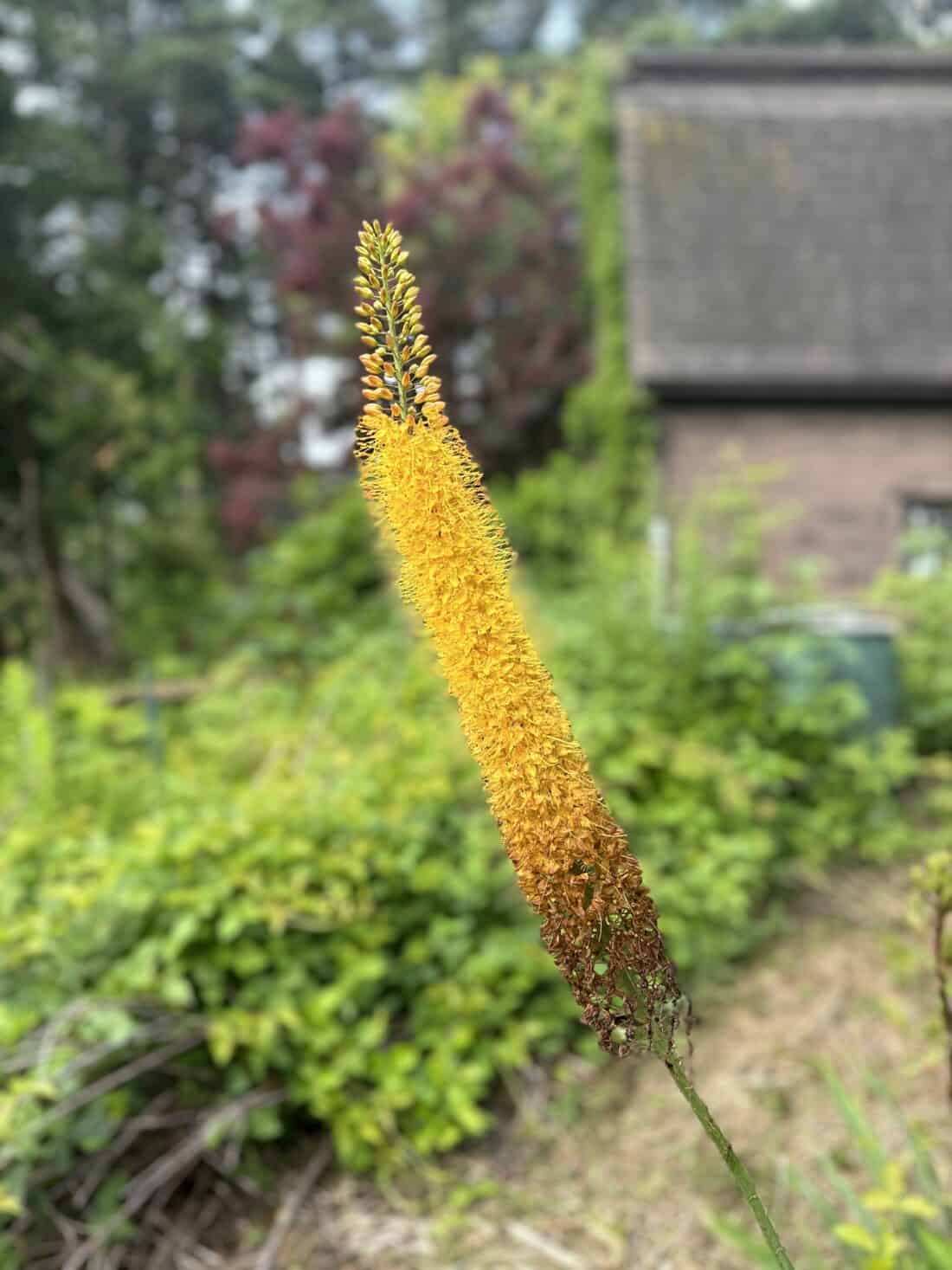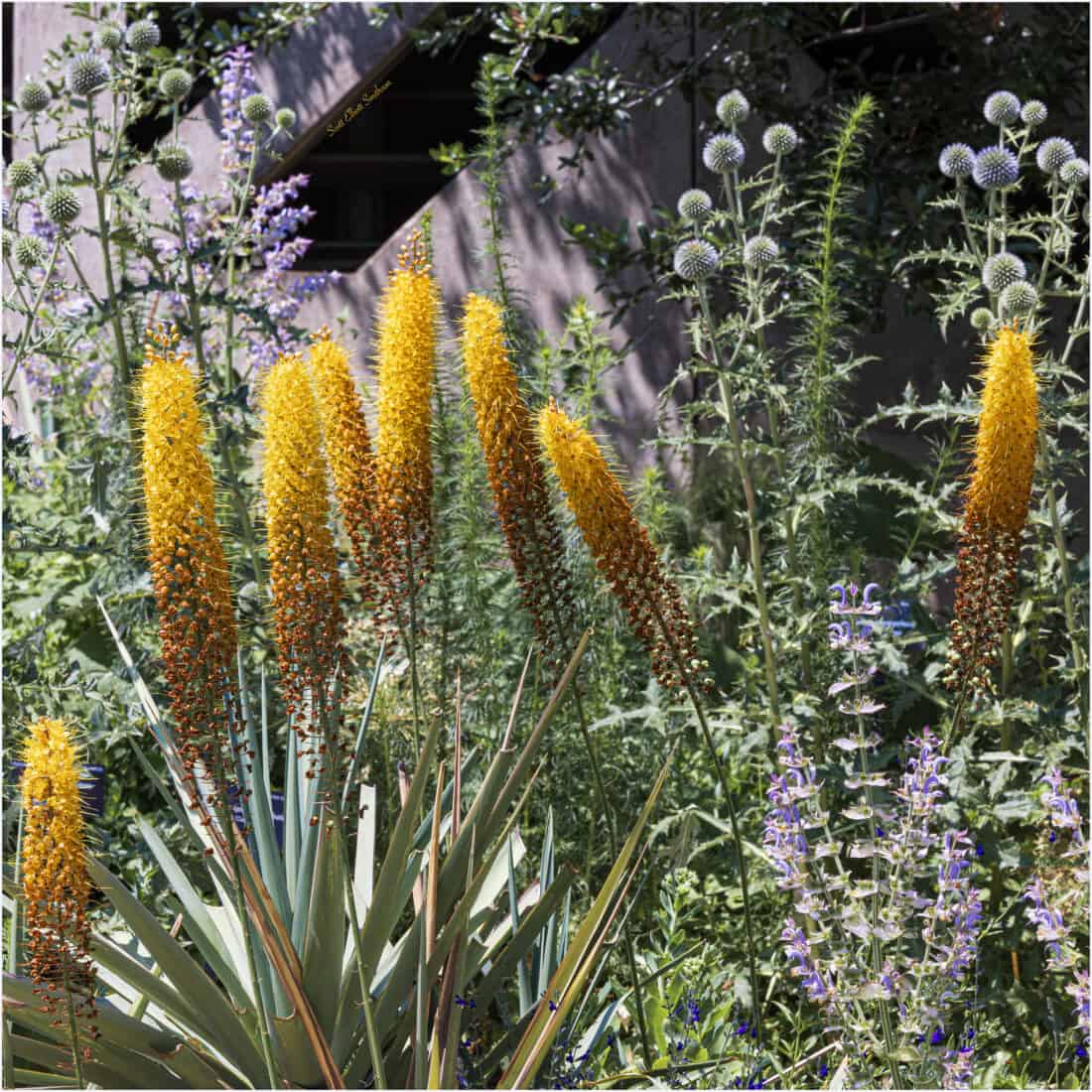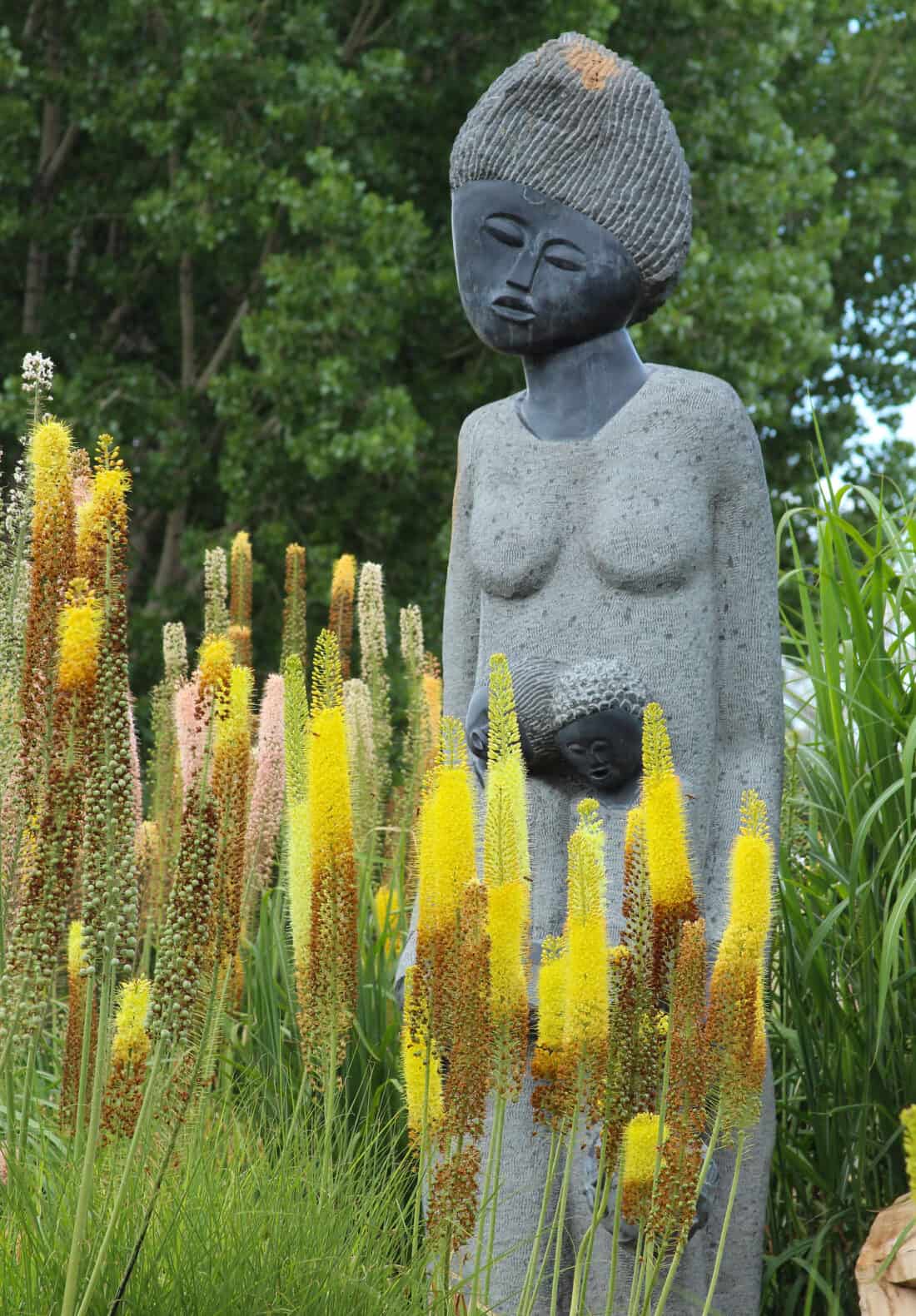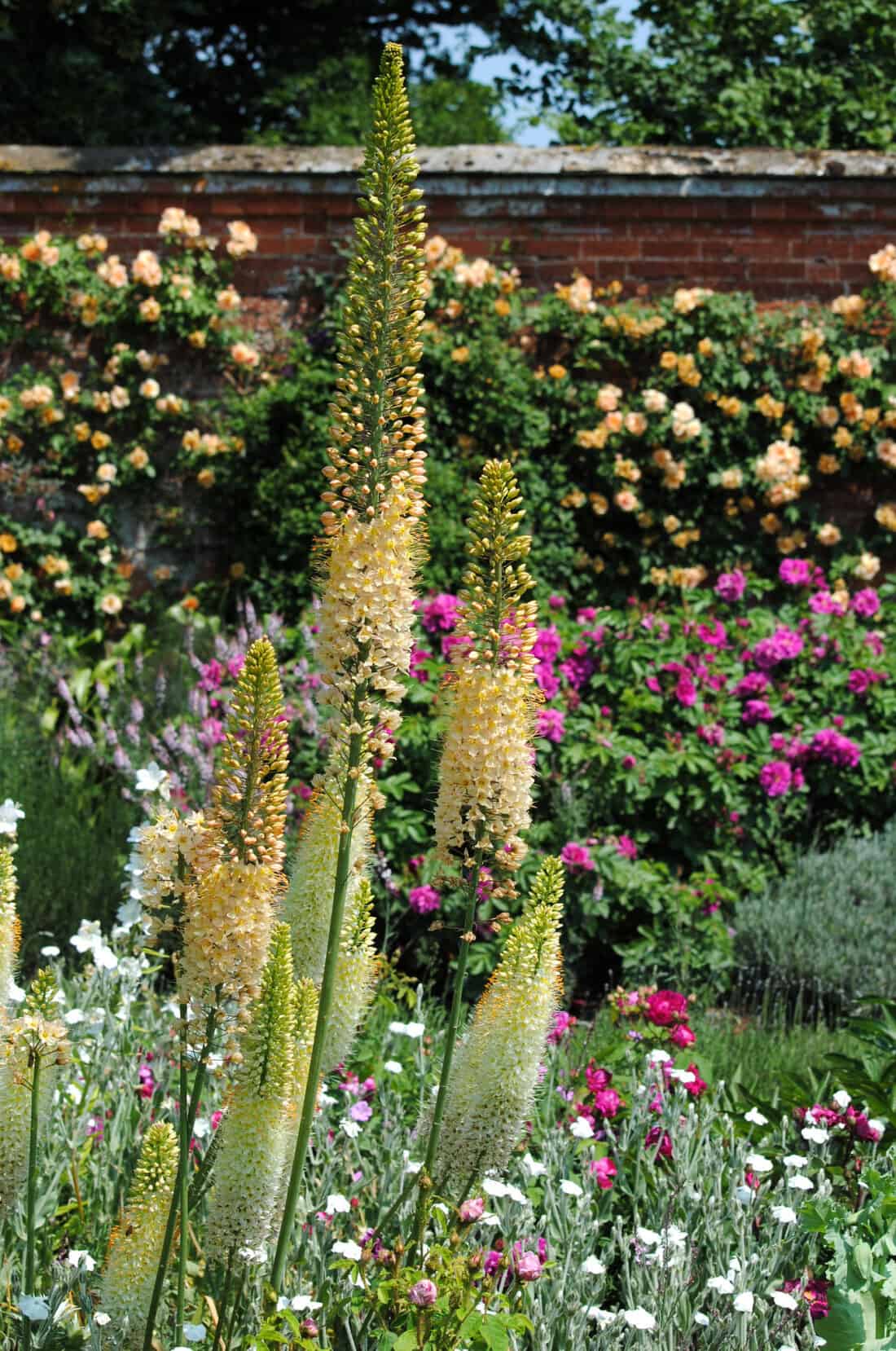Hopefully, the title of this post has piqued your interest. What exactly do these three things have to do with one another, you ask? Today, we started planting 23,000 bulbs at Coastal Maine for a wonderful spring display.
This is the biggest number of bulbs that we have ever planted in the fall. At the end of today, we estimated that we had planted close to 9,000 bulbs. Have you ever planted bulbs for more than 4 hours? After several hours, your knees, back, shoulders, and wrists start to hurt. I have decided that after the age of 40, Aleve should be a free medication. That or red wine.
To alleviate some of the strains and pains, we take stretch breaks to loosen up our bodies. I get in one of my favorite stretches, the downward-facing dog. It is a good thing our visitation has lessened for the season, as doing yoga in public is not one of my favorite things. As I type this post tonight, I’m reminding myself to keep my back straight with good posture. Here, with a glass of good red wine beside my laptop, I am thinking back on the day and hoping that many of you are thinking of planting your spring flowering bulbs as well.

We are planting the customary spring flowering bulbs: daffodils, tulips, and hyacinths, but this year, we are adding a new bulb to the mix – Eremurus or Foxtail lilies.
A lot of people have never seen a foxtail lily in flower. Hopefully, in the spring of 2014, guests will see several hundred of them at CMBG. The foxtail lily (Eremerus stenophyllous) flowers in late spring on 3-4′ tall yellow spikes (though you can also buy varieties that have white flowers as well as shades of peachy pink).
The flowers are unlike any others that gardeners have seen here along the East Coast of the United States. They start flowering at the bottom of the inflorescence, around 2′ above the ground. The bright yellow flowers continue to open as the flower stalks mature, with the last flowers opening near the end.
How to plant foxtail lily bulbs
When you buy foxtail lilies, they will arrive as dormant bulbs in the fall. The main foxtail lily bulb should appear fleshy with a slightly yellow tip. Emanating off of this bulb will be several roots about the diameter of a drinking straw. The roots are 6-8″ in length, so they look like light brown spiders. These roots should not be damaged, and it is best to plant the bulbs in a trench 6″ deep rather than a typical singular planting hole. Each plant makes only one flower stalk in a growing season, so plan to grow many of them in clusters to get the most dramatic effect.
The site should be in full sun with well-drained soil. To give you an idea of their natural growing conditions, Eremerus are wild in rocky outcrops in Pakistan and Iran in central Asia. They are hardy in USDA hardiness zone 5-8, needing an additional protective layer of mulch in zones 5 and 6.
Ours are all in the ground, and I cannot wait to see them emerge in early spring next year. Until then, there is tomorrow, and we have another 14,000 bulbs to plant by Thursday afternoon. If you look at my grocery shopping list, you’re bound to see Aleve and more red wine.
–Rodney

How to Grow Foxtail Lily Bulbs – Notes from Rochelle
Eremurus caught my eye in a garden picture from my friend and Chicago-based Designer Amanda Thomsen of Aster Gardens. They were a perfect pair to a midcentury modern landscape, and having never seen or heard of them, I was eager to figure out what would create such a dramatic bloom in such a cold zone (that is very much like my own).
Rondey’s description of the ebulb as spiders is accurate – I’ll admit – I am not sure if I placed some upside down or not. They were so flat. I am still perfecting my knowledge of these plants. In my initial trials, I only had about a 50% success rate – but those 50% are amazing enough that I am ready to go many more rounds to figure out how to grow even more of these tall, willowy spires of flowers. I am utterly in love with this plant and am working towards cultivating a bunch of them into a stunning display.
Notes from my Eremurus Planting Trials in Central Massachusettes
Eremurus really hates heavy soil. The more well-draining soil you have, the better. It is unsurprising to me that Denver Botanic Garden has such fantastic displays of these plants – their soil is much more of a sandy loam as compared to my rich and damp New England soil.
They also really want good drainage – I have them planted in a variety of places, but the one spot they clearly like the best is where the topsoil is thin. It is also the area where I once had garden paths that were made with layers of gravel. This gravel is mixed with the underlying soil now (years later), but my success rate with bulbs planted in these conditions is very high compared to everywhere else in my garden. I’d say something like 85% rather than 50%. A radical improvement.

The area the most prefer is pretty weedy now. It is an abandoned area of my old vegetable garden. (From back in the days when I grew like 5000 vegetables). It is hot and dry and has excellent drainage – many things would find this spot to be too desert-like. But the tall spikes of Eremurus flowers emerge above the weeds like beacons. They are shockingly undeterred by the mess of plants and detritus that surrounds them.
I wonder if the ‘desert candles’ common name is a clue to how much bright sunlight they like. They really do seem happiest in the driest, most unforgiving spot – right next to the yucca filamentosa.
I have all the colors: Golden yellow, white and peach. They are sturdy, and I’ve had no reason to stake them. Even though I get strong winds here on top of the hill. Their stems are similar to a red hot poker but taller. The densely-packed flowers extend for a much longer portion of the stalk. (Mine typically have at least 12 inches of bloom on stalks that are at least 3-4ft tall).

Future Trials for Foxtail Lilies
In future plantings, I am going to pay special attention to planting the Eremurus bulbs. I want to make sure I haven’t planted anything upside down and also make sure I am planting them in a nice wide hole where all the spider legs can stretch out.
I’m also going to focus on finding the best dry spots and sunny locations in my garden and will space plants closer together to get better flower clusters.
Longfield Gardens describes digging a hole and then backfilling the hole with a mound of sand so that the legs of the Eremurus crowns extend down from their center. Then, refill the hole so that the bulb is only a few inches below the surface. It’s important not to plant the bulbs too deeply. The crown (where roots meet the stem) should only be an inch or two below the soil level.
I am curious to explore how long it might take for my happy plants to grow into mature Eremurus clumps. If you have experience with growing them for many years and have some insight about getting them to naturalize – let me know in the comments.
One last note: It is nearly December as I write this, and I still have a single Eremurus flower stem that I picked and put in a tall vase when it was fresh. Like hydrangeas – this Foxtail lily has has dried beautifully in the vase. I am hesitant to toss it out to make way for my Christmas decor.
The foxtail lillies should be wonderful come spring. I plant them every few years in my garden…you should know that they come in other colors – white, pink and orange. I think one of the reasons we don’t see them very often in East Coast gardens is they are expensive and they need to be treated as annuals in our zones, and they are not always reliable to bloom BUT they are majestic and well worth the effort and expense.
Well, I plan to grow Muscari and Amaryllis bulb in backyard.